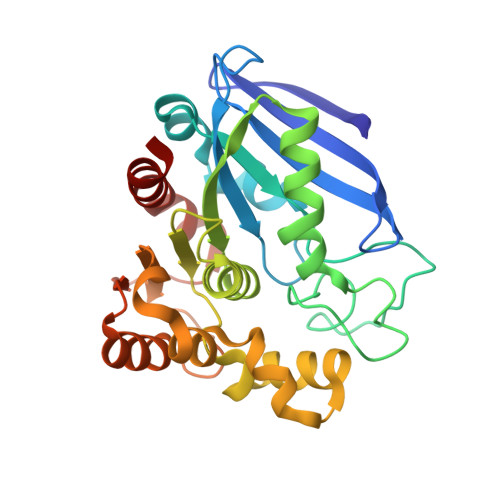Crystal structure of an S-formylglutathione hydrolase from Pseudoalteromonas haloplanktis TAC125.
Alterio, V., Aurilia, V., Romanelli, A., Parracino, A., Saviano, M., D'Auria, S., De Simone, G.(2010) Biopolymers 93: 669-677
- PubMed: 20209484
- DOI: https://doi.org/10.1002/bip.21420
- Primary Citation of Related Structures:
3LS2 - PubMed Abstract:
S-formylglutathione hydrolases (FGHs) constitute a family of ubiquitous enzymes which play a key role in formaldehyde detoxification both in prokaryotes and eukaryotes, catalyzing the hydrolysis of S-formylglutathione to formic acid and glutathione. While a large number of functional studies have been reported on these enzymes, few structural studies have so far been carried out. In this article we report on the functional and structural characterization of PhEst, a FGH isolated from the psychrophilic bacterium Pseudoalteromonas haloplanktis. According to our functional studies, this enzyme is able to efficiently hydrolyze several thioester substrates with very small acyl moieties. By contrast, the enzyme shows no activity toward substrates with bulky acyl groups. These data are in line with structural studies which highlight for this enzyme a very narrow acyl-binding pocket in a typical alpha/beta-hydrolase fold. PhEst represents the first cold-adapted FGH structurally characterized to date; comparison with its mesophilic counterparts of known three-dimensional structure allowed to obtain useful insights into molecular determinants responsible for the ability of this psychrophilic enzyme to work at low temperature.
- Istituto di Biostrutture e Bioimmagini-CNR, via Mezzocannone 16, 80134 Napoli, Italy.
Organizational Affiliation:

















